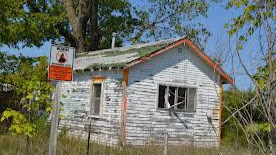
Need an Engineer’s Structural Certification Letter?
Here’s a simple checklist for working with your engineer to get your foundation (no matter how big or small) inspected & certified so the “City” will give you your “Certificate of Occupancy” and close your project:
- Find a Structural Engineer who performs Structural Inspections (Yes, we do Structural Inspections!).
- Hire the Engineer before your pour concrete if possible.
- If you do not have a foundation design, get one. You’ll probably save some money in the long run.
- Email your foundation sketch to the Engineer (if you do not have a drawing or sketch, that’s OK, but if the engineer gets to your site and determines the foundation violates
- code, the engineer must make a repeat inspection for added fees).
- Schedule your engineer to inspect your foundation (big or small).
- Request the engineer to provide you with the “Standard Engineer Letter” and send it to Development Services so you can get your “Certificate of Occupancy” and close your
- permit (or, just give us a call and we’ll put you on the schedule).
Make sure you check with your local building permit department for their specific requirements. Here’s an example of a city ordinance requiring an engineer’s inspection and certification letter:
… In order to obtain a permit, applicants must be the homeowner or registered as a residential builder and must complete the Foundation Repair Permit and submit it to the One Stop Counter at the DBS Center or any of the City’s Service Centers. This application and the permit must be available at the job site. This permit cannot be obtained using the department’s on-line permitting system. A double fee will apply for failure to get a permit before starting work. The specific requirements for each foundation type are as follows:
Slab on Grade – This type of repair needs to be designed and inspected by a professional engineer, licensed by the state of Texas. In order to clear the foundation inspection, the engineer letter must specifically indicate that the drainage away from the foundation meets the minimum requirements of the City’s current building codes. Failure to include this information in the engineer letter will result in receiving a “partial pass” Foundation Inspection and will require the permit holder to schedule an Inspection in order for the department to verify that the drainage away from the foundation meets the minimum requirements of the code.
Pier & Footing – Applicants must state the type and number of piers that will be repaired and/or replaced. This type of repair or replacement work needs to be designed and inspected by a professional engineer, licensed by the state of Texas. An engineer letter must be submitted to clear the foundation inspection. NOTE: IF THE ENGINEER LETTER DOES NOT MATCH THE PERMIT APPLICATION, YOU WILL RECEIVE A “PARTIAL PASS” INSPECTION. IN ORDER TO CLOSE THE PERMIT, YOU WILL NEED TO EITHER SUBMIT A SECOND ENGINEER LETTER OR SUBMIT A REQUEST TO AMEND THE PERMIT (A PERMIT AMENDMENT FEE WILL APPLY).
The ICC Residential Building Code has additional requirements based upon the scope of work as follows:
Wood Sill/Beam/Girder/Shimming Repair or Replacement – This type of work must be designed and inspected by a professional engineer, licensed by the state of Texas. In order to clear the foundation inspection, the engineer letter must specifically indicate that the repair or replacement of the wood sills, wood shim, beam, girder, meet the minimum requirements of the City’s code. Failure to include this information will result in receiving a “partial pass” Foundation Inspection and the permit will remain open until the department receives verification from the engineer that the wood sills, beam, girder, shimming meet the minimum requirements of the code.
Skirting Removal, Repair or Replacement – If the scope of work requires you to alter the skirting, the permit holder is responsible for the additional requirement to schedule a Final Inspection to allow the department’s building inspectors to inspect the work for venting, subfloor access, and drainage. If the engineer letter specifically includes an inspection for venting, subfloor access, and drainage, a Final Inspection will not be requires.
If you are building in San Antonio, all engineer letters should be standardized using a template and submitted to Development Services.
Engineer’s Structural Certification Letter Engineer’s Structural Certification Letter Engineer’s Structural Certification Letter
 Our firm proudly practices both CIVIL ENGINEERING AND STRUCTURAL ENGINEERING. We also practice forensic engineering and testify in the Texas courts when called to do so. We are experienced, seasoned professionals. At any given time, we are providing expert testimony, designing commercial building facilities, and providing civil and structural consulting services to our customers.
Our firm proudly practices both CIVIL ENGINEERING AND STRUCTURAL ENGINEERING. We also practice forensic engineering and testify in the Texas courts when called to do so. We are experienced, seasoned professionals. At any given time, we are providing expert testimony, designing commercial building facilities, and providing civil and structural consulting services to our customers. Residential ground surface storm drain systems must transport excess moisture away from designated areas where excess water would otherwise prevent the normal use of a residential property. If rainfall is allowed to pond or collect next to a structure built on expansive soil, the structure may be subjected to unscheduled distress caused by swelling bearing soils due to increased soil moisture content. Lot surfaces must be graded to drain away from the structure in accord with the International Residential Code R401.3. Likewise, perpetually moist ground surfaces limit recreational use of residential yard areas, and can become a breeding ground for disease carrying insect infestations. Water must freely exit the property to assure unrestricted, healthy, and environmentally safe use of land areas within residential property boundaries.
Residential ground surface storm drain systems must transport excess moisture away from designated areas where excess water would otherwise prevent the normal use of a residential property. If rainfall is allowed to pond or collect next to a structure built on expansive soil, the structure may be subjected to unscheduled distress caused by swelling bearing soils due to increased soil moisture content. Lot surfaces must be graded to drain away from the structure in accord with the International Residential Code R401.3. Likewise, perpetually moist ground surfaces limit recreational use of residential yard areas, and can become a breeding ground for disease carrying insect infestations. Water must freely exit the property to assure unrestricted, healthy, and environmentally safe use of land areas within residential property boundaries.